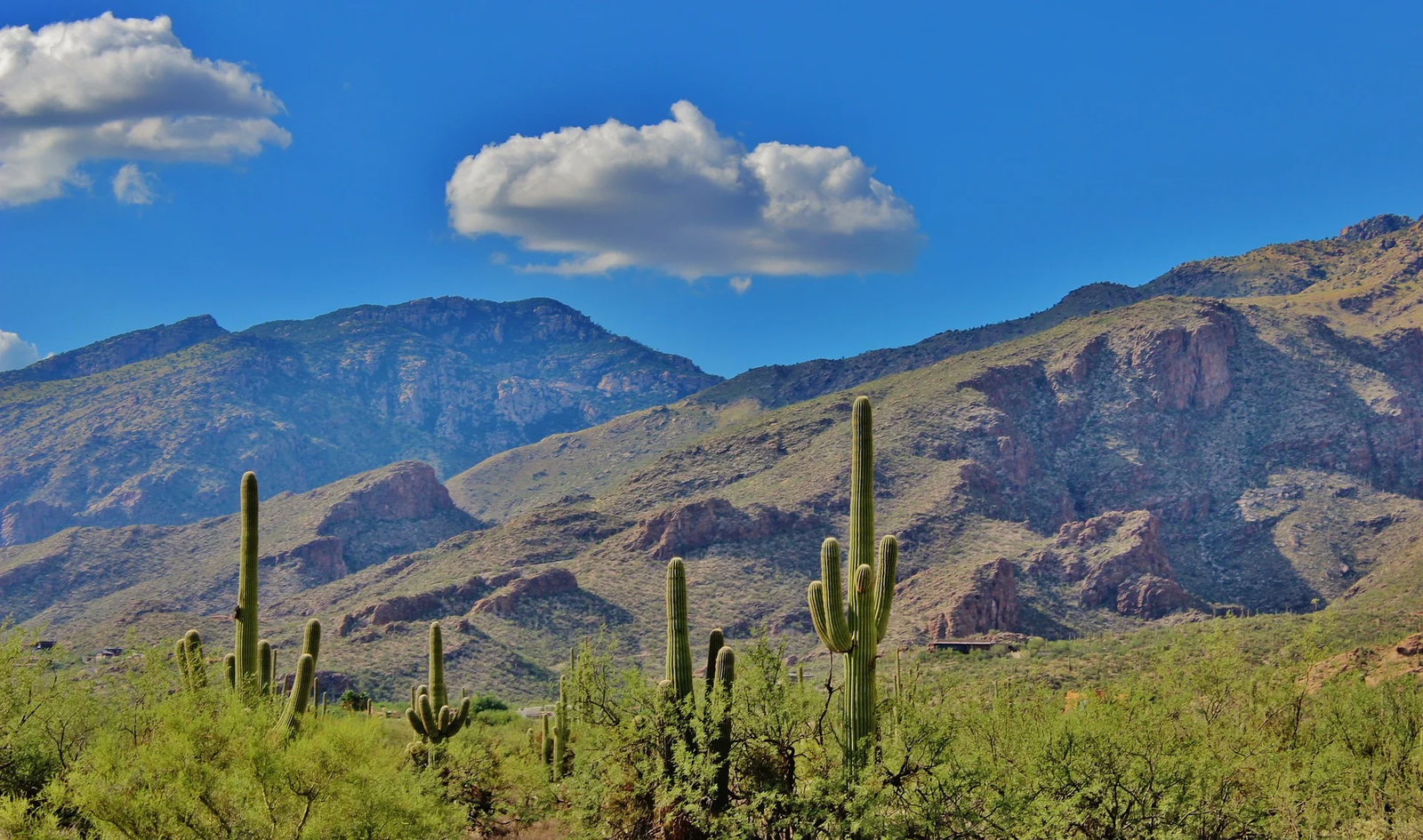Nestled within saguaro-studded Sonoran Desert scenery, Tucson overflows with vibrant culture, quintessential Southwestern charm, and no shortage of epic landscapes waiting to fill your itinerary. From the striking Santa Catalina Mountains backdrop to prestigious arts institutions and Old West history, Arizona’s second largest city offers visitors memorable experiences around every cactus-dotted corner.
| Activity | Description |
|---|---|
| University of Arizona Campus | Explore the campus with its museums and architecture. |
| Tucson Botanical Gardens | Admire desert flora across themed gardens. |
| MOCA Tucson | Visit contemporary art exhibitions. |
| Sabino Canyon | Hike or bike through scenic desert landscapes. |
| Flandrau Science Center | Discover space and science exhibits. |
| Free Food Tour | Sample Sonoran delicacies. |
| Murals Across Town | Photograph vibrant street art. |
| Historic Tucson Rodeo Grounds | Tour the grounds and learn about rodeo history. |
| Kitt Peak National Observatory | Stargaze at this renowned observatory. |
| Downtown’s Presidio Trail | Walk through Tucson’s historic heart. |
| Tucson Museum of Contemporary Art | See contemporary and wild art exhibits. |
| Various Community Events | Engage in local cultural and art events. |
The best part? You don’t have to break the bank to uncover Tucson’s most captivating attractions. Diverse museums, rich heritage sights, stunning nature refuges, and university campus gems all offer free admission—perfect for travelers seeking engaging activities that won’t drain your vacation budget.
Keep reading for the top 12 free things to add to your Tucson travel checklist for an affordable introduction to the city’s one-of-a-kind landscapes, storied past, and distinctive desert personality unique to sunny southern Arizona.
Stroll Through the University of Arizona Campus
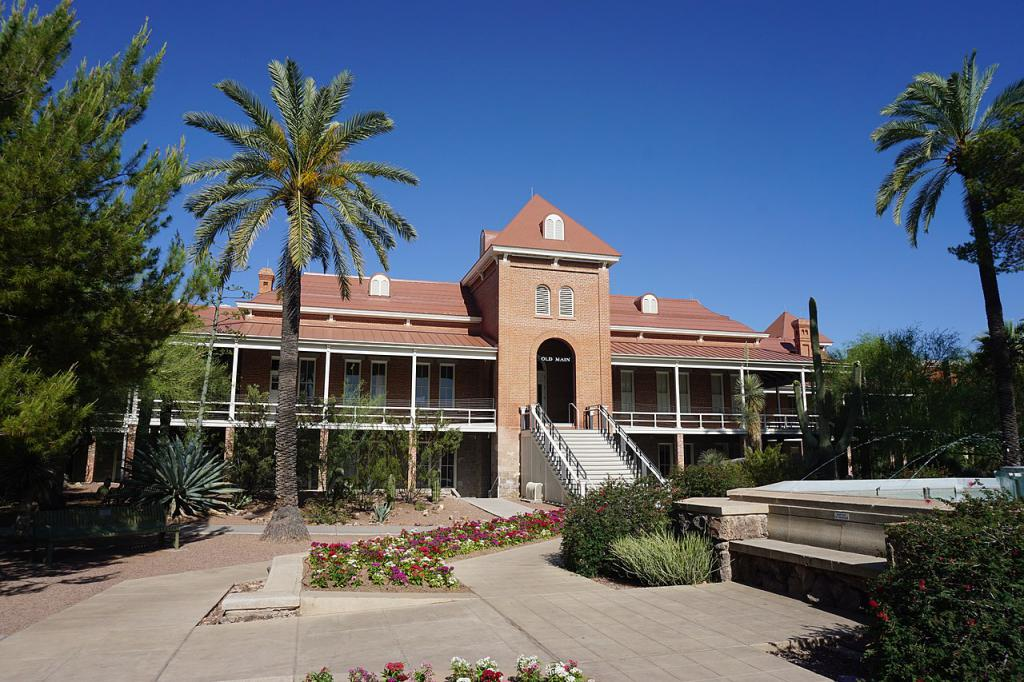
Name and Location: The University of Arizona main campus located in central Tucson.
History and Significance: Founded in 1885, the University of Arizona is the oldest university in the state. Its campus features a blend of historical architecture and modern buildings that showcase its history as both an academic institution and the cultural heart of Tucson.
What to Expect: Visitors can explore the campus on walking tours to see sites like Old Main, the Student Union Memorial Center, the Arizona State Museum and the Arizona Stadium. Public art, gardens and museums can also be discovered across campus.
Visitor Information: Campus open daily. Free 90-minute walking tours offered weekdays during academic year. Visitor parking available.
The University of Arizona’s beautiful campus serves up manicured green spaces, standout architecture, and intriguing museums free for visitors to admire while soaking up scholarly knowledge. The ENR2 building’s expansive windows perfectly frame the Catalina Mountains’ towering presence, while various tucked-away courtyards offer quiet respites dotted with sculptures and desert plants identified by helpful plaques.
Inside expansive libraries brimming with one-of-a-kind literary collections, original murals portray Southwest imagery celebrating the region’s culture and history. And throughout campus, various free museums invite you to glean new insights into everything from astronomy to photography to indigenous arts while getting your steps in wandering Tucson’s storied halls of higher education.
See 400 Species at the Tucson Botanical Gardens
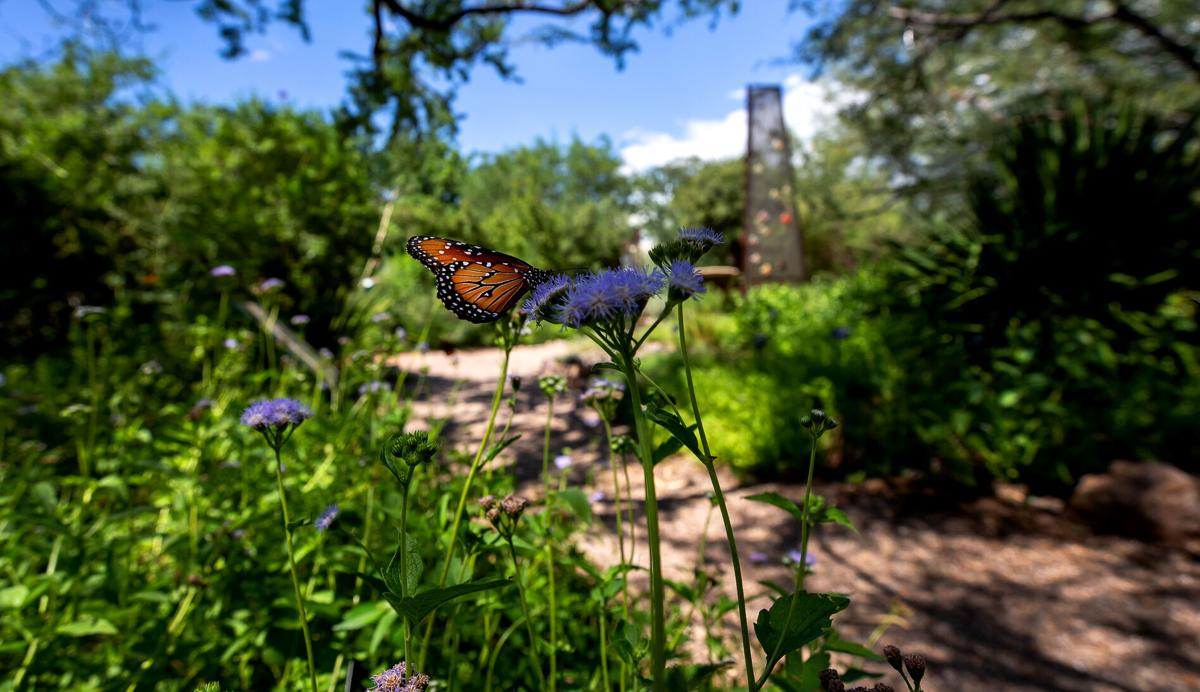
Name and Location: Tucson Botanical Gardens located west of downtown.
History and Significance: Established in 1960, the Tucson Botanical Gardens cultivates a variety of regional ecosystems across its 5 acres featuring over 400 native plant species on display year-round as well as rotating art exhibitions.
What to Expect: Visitors explore the Gardens’ exhibits highlighting Sonoran Desert flora, a tropical greenhouse, cactus displays, herb gardens, butterfly habitat and ponds across outdoor trails. Seasonal events and classes offered.
Visitor Information: Open daily 8:30am-4:30pm. Admission $15 adults, $13 seniors, $7 students, free under age 6.
Unfurling across 5 acres in the heart of the city, the Tucson Botanical Gardens offer a relaxing oasis to escape the bustling streets and admire creative themed garden spaces bursting with desert flora. The Cactus and Succulent Gardens contain dizzying collections from around the world, while the Garden of Ancients holds plants echoing eras when dinosaurs roamed. The Barrio Garden demonstrates water harvesting used in Tucson’s early days, contrasted against the tranquil Japanese Garden dotted with koi ponds, stone sculptures, and bonsai trees manicured to mimic expansive landscapes.
No matter where garden trails meander next, informative signs detail botanic wonders surrounding you at every turn to appreciate up close free-of-charge any day of the week. As you wander past fragrant herbs, vibrant wildflowers, and even specimens used in Mexican folk healing, the Tucson Botanical Gardens make for a refreshing urban escape immersing you into the city’s distinctive desert scenery.
Check Out Intriguing Art at MOCA Tucson

Name and Location: Museum of Contemporary Art Tucson downtown
History and Significance: Established 1997, MOCA Tucson brings cutting-edge contemporary art exhibits to the community through thought-provoking shows that embrace diverse cultures and voices. Its exhibits, classes and events aim to inspire creativity.
What to Expect: Visitors explore ongoing and limited-run exhibits from exciting contemporary artists across mediums of painting, sculpture, glasswork, multimedia and more. Some displays incorporate sound, light and interactive elements.
Visitor Information: Open Wed-Sun 12-5pm. Admission $10 adults, discounted on Thursdays 5-9pm. MOCA After Dark events held monthly 6-10pm with music, cash bar and gallery access.
Dedicated to contemporary exhibitions illuminating modern artistic expressions, MOCA Tucson’s multiple galleries invite visitors to freely explore rotating displays spanning painting, sculpture, photography and more nodding to both regional creativity and global installations. The adjoining MOCA Plaza provides additional public spaces for large-scale outdoor sculptures, pop-up shows in repurposed shipping containers, and annual events like the popular All Souls Procession celebrated through vivid costumes, music, and artistic revelry each November.
Inside minimalist MOCA lobby spaces, don’t miss the whimsical permanent sculpture Mobile featuring colorful abstract shapes that twist dramatically overhead. And with free admission, MOCA makes experiencing Tucson’s vibrant art scene easy while offering air-conditioned respite between other outdoor city explorations.
Hike or Bike Through Sabino Canyon
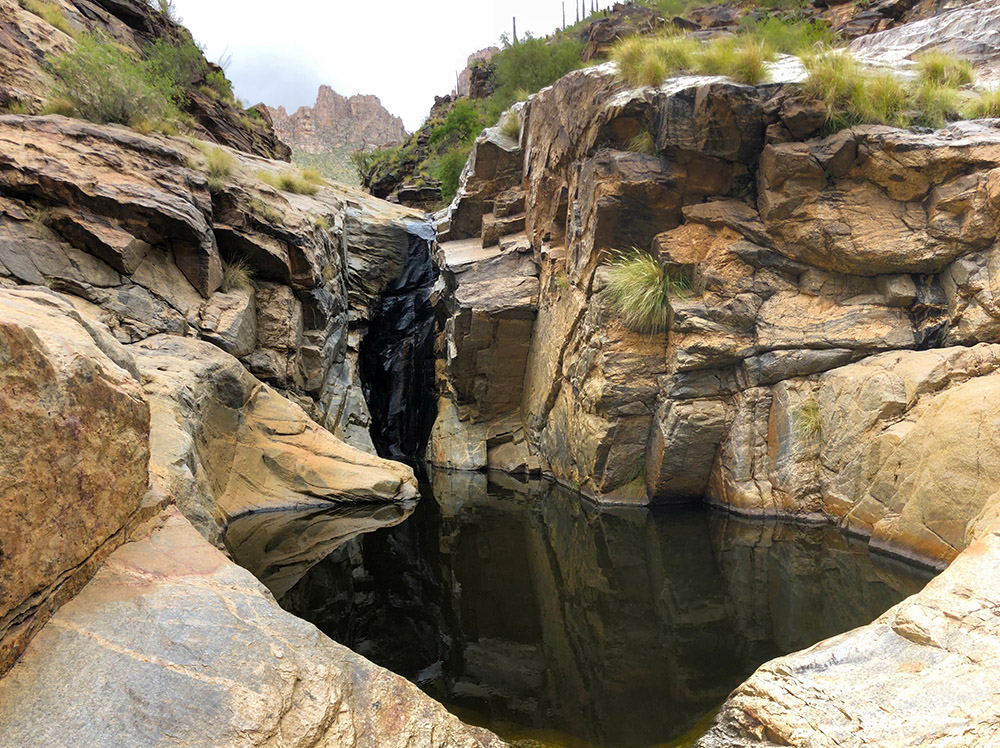
Name and Location: Sabino Canyon Recreation Area in Coronado National Forest
History and Significance: Set against the base of the Santa Catalina Mountains with rock formations carved by Sabino Creek, Sabino Canyon provides some of the best opportunities to experience and photograph desert vistas via miles of hiking trails for all skill levels.
What to Expect: Hikers and bicyclists can traverse through the various trails and desert terrain, with options to take the tram or visit the visitor center. Variable desert landscapes, streams and plentiful Saguaros await exploration seasonally.
Visitor Information: Open daily. $10-15 vehicle day passes. Center open 8:30am-4:30pm. Trams run 9am-4:30pm. Last entry at 4:15pm.
With nearly 60,000 acres of pine forests, prickly pears, and mountain streams slicing through the foothills of the Santa Catalina Mountains, Sabino Canyon stands out as one of Tucson’s most easily accessible Sonoran Desert escapes. Nearly 10 miles of hiking trails cater to all abilities, whether meandering gently along creekside oases or climbing up to rocky overlooks with panoramic city views unfurling below. Bike rental stations additionally make two-wheeled traversing paved park roads lining up epic mountain vistas quick and breezy.
If legs start to tire, hop aboard the Sabino Canyon Tram. For only $10, it whisks you through the canyon’s heart past golden cottonwood trees and cactus-dotted slopes while onboard narration gives helpful context. However you opt to traverse it, Sabino Canyon’s untamed natural beauty awaiting just minutes from downtown offers the quintessential taste of what makes Tucson’s epic landscapes so special.
Learn About Space & Science at Flandrau Science Center
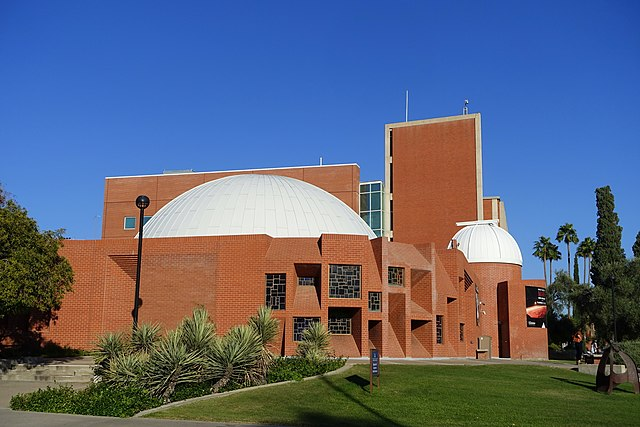
Name and Location: Flandrau Science Center at the University of Arizona
History and Significance: Open since 1976, Flandrau Science Center offers interactive exhibits and planetarium shows to engage visitors of all ages in science and astronomy discoveries. Its 16″ public telescope offers amazing galactic viewing opportunities.
What to Expect: Guests can view rock/mineral displays, crawling insect models and rotating exhibits highlighting space, earth sciences and engineering innovations. The STEM/educational play area engages kids in creative problem solving.
Visitor Information: Open M-F 9am-5pm, weekends 10am-10pm. Admission $7-15. Stargazing/telescope viewing schedule varies; check site for hours/pricing.
With its planetarium theater, science exhibits, and mineral museum, the Flandrau Science Center & Planetarium on the University of Arizona campus offers stellar opportunities to freely nerd out over cosmic attractions. During the day, visitors can get hands-on with rotating science displays in the expansive exhibit gallery focused on space exploration and astronomy.
But dazzling magic happens once Flandrau’s planetarium theater lights dim to showcase immersive projections recreating distant solar systems, partially eclipsed moons, and even visualizations revealing what alien sunrises might look across Mars glowing red along distant horizons. Through doors that always remain free-of-charge to push open, Flandrau makes gazing into galaxies near and far exhilarating and educational under one very cool Tucson roof.
Sample Sonoran Delicacies on a Free Food Tour

Name and Location: Downtown Tucson area restaurants
History and Significance: As a UNESCO Creative City of Gastronomy, Tucson boasts a vibrant, historic food scene fusing the flavors of Sonoran Desert native ingredients with the cultural influences of Spanish, Mexican, Greek and Native American cuisine into something creative and uniquely southwestern.
What to Expect: Taste 5-7 signature bites that encapsulate Tucson’s distinct culinary identity across 3 locally-owned eateries, with free transportation provided between stops. Discover the stories behind the foods that define Tucson’s UNESCO designation.
Visitor Information: Public and private Downtown Food Tours offered daily at 9am/1pm. 3 hours. Reservations required. $45/pp groups, $95 private tours up to 5 guests.
As the first city worldwide designated as a UNESCO Creative City of Gastronomy thanks to signature dishes like tacos tinga de pollo and hot Sonoran dogs piling ingredients sky-high, no visit feels complete without digging into Tucson’s scrumptious food scene. Luckily several walking and bike-led tours dish up hearty samples spotlighting the city’s singular south-of-the-border meets cowboy cuisine absolutely free-of-charge outside ticket costs.
Taste authentic Sonoran flavors emerging from local favorite eateries passed down generationally across family-owned taquerias and bakeries. Or graze funky fusion specialties that uniquely celebrate both Tucson’s Mexican and wider culinary heritage through Korean-inspired chimichangas or Chinese pepper steak burritos smothered in local Hatch green chiles. No matter the flavors that call your name, gratis food tours make for filling and tasty ways to take big affordable bites out of Tucson’s cheap eats.
Photograph Vibrant Murals Across Town
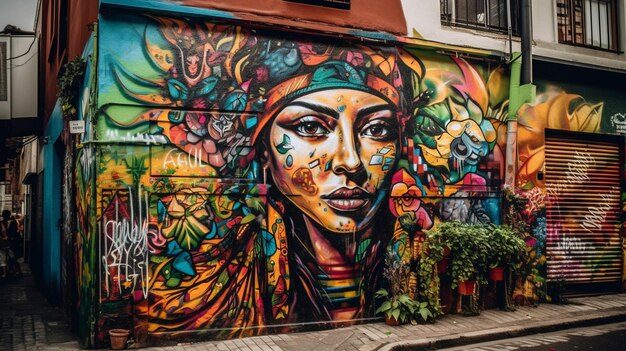
Name and Location: Murals along downtown streets and surrounding Tucson neighborhoods
History and Significance: Tucson boasts over 100 vibrant outdoor murals across public spaces downtown and beyond that showcase local artists and bring splashes of culture adding to the city’s creative spirit and identity. New pieces appear annually for visitors to discover.
What to Expect: Guests can seek out colorful, imaginative murals by using street art apps/maps to explore Tucson neighborhoods on foot or bike to appreciate these outdoor galleries and capture unique southwestern-themed photo ops.
Visitor Information: Free outdoor attraction. Year-round. Use apps or get mural maps from the Visitor Center.
Splashed colorfully across countless building facades in downtown and surrounding districts, Tucson’s dramatic outdoor murals transform ordinary walls into oversized canvases brimming with artistic expression. Iconic saguaros, migrating monsoons, and desert creatures come alive through detailed paintbrushes both professional and amateur alike. Several organized tours provide helpful cultural context behind poignant pieces, but plenty of phenomenal works dot the Mercado District or 4th Avenue begging for spontaneous photo ops absolutely free.
Keep eyes peeled walking or biking around to perhaps glimpse surreal tableaus with whales floating through desert skies, five-story Frida Kahlos staring intensely ahead, or nostalgic scenes capturing the city’s western roots. However Tucson’s vibrant street art catches your eye, make admiring the open-air galleries part of any creative itinerary.
Tour the Historic Tucson Rodeo Grounds

Name and Location: Tucson Rodeo Grounds located just east of downtown
History and Significance: Established in 1913, these landmark grounds have hosted professional rodeo events for over 100 years, serving as the winter host site for the traditional sport, which draws top cowboys competing annually in late February during La Fiesta de los Vaqueros.
What to Expect: Daily walking tours showcase artifacts in the on-site museum before viewing the historic grandstand and arena where guests can visualize the excitement of past rodeos while learning of the rodeo’s significance to the region’s history and culture.
Visitor Information: Walking tours daily at 10am & 2pm. $15 adults, $12 seniors/military, $8 children 4-12. Closed major holidays.
Since 1925, excitement and entertainment have blazed beneath towering grandstands welcoming professional cowboys vying to tame bucking broncos during the annual La Fiesta de Los Vaqueros earning Tucson Rodeo acclaim as one of pro rodeo’s big seven. Even outside bull riding events, these historic grounds beckoning Old West nostalgia offer behind-the-scenes barn access and exhibits free-of-charge daily.
Peer through stalls at restless steeds getting prepped for arena action by real working cowboys, then roam galleries tracing trick riding’s death-defying evolution alongside larger-than-life bronze sculptures honoring rodeo’s most triumphant legends and beloved bucking bulls. For an authentic taste of Tucson’s western past still very much thriving today, moseying through the Tucson Rodeo Grounds provides a one-of-a-kind glimpse behind the chutes for free.
See the Stars Come Out at Kitt Peak National Observatory
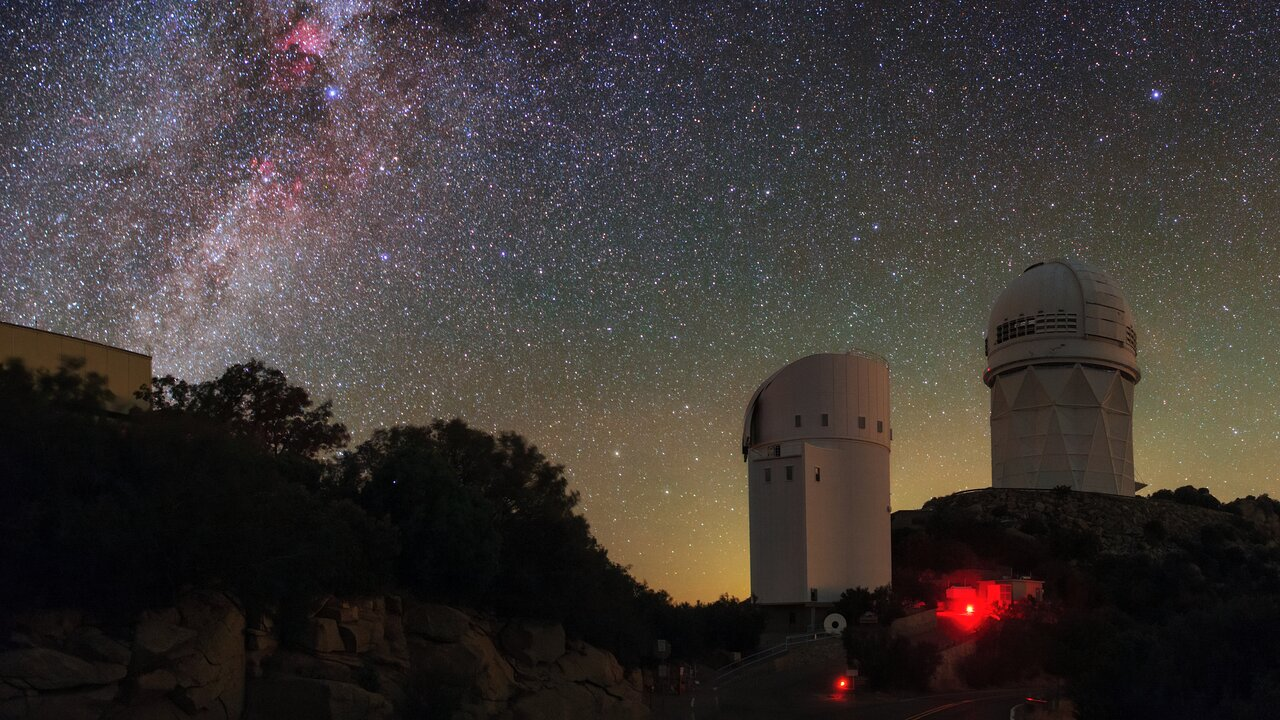
Name and Location: Kitt Peak National Observatory, located southwest of Tucson in the Tohono O’odham Nation
History and Significance: Founded in 1958, Kitt Peak National Observatory serves as one of the world’s premier astronomical research facilities, featuring a collection of over 20 optical telescopes used to study stars, galaxies and solar systems. Nightly stargazing allows public telescope viewing.
What to Expect: Daily tours showcases the telescopes and astronomy discoveries. The highlight for most visitors is accessing powerful telescopes after dark to glimpse colorful nebulae, star clusters beyond the Milky Way and various stellar phenomena.
Visitor Information: Open daily 9am-4pm. Day admission $5, Nightly Observing pass $55, discounts for children/seniors. Reservations strongly recommended.
Perched isolated atop the Tohono O’odham Nation’s sacred Iolkam Du’ag mountain, Kitt Peak National Observatory safeguards over two dozen mammoth research telescopes all pointed diligently skyward to unlock mysteries of the universe through lingering nightly studies. While tours must be booked in advance to visit the summit’s telescopic crown jewels, Kitt Peak still offers phenomenal stargazing courtesy of their Nightly Observing Program welcoming visitors to enjoy free public telescope viewings and astronomy presentations as darkness falls over the remote Arizona desert.
Peer at Saturn’s rings, glowing nebula gases, and distant galaxies through high-powered scopes expertly positioned by astronomers eager to share their scientific passions. Later, recline by the outdoor amphitheater to appreciate innumerable stars scattered dazzlingly overhead. At over 6,800 feet elevation, Kitt Peak’s thin atmosphere makes for phenomenal celestial observations to soak up simply by just gazing in fascinated awe on clear evenings – no admission required.
Walk Along Downtown’s Presidio Trail
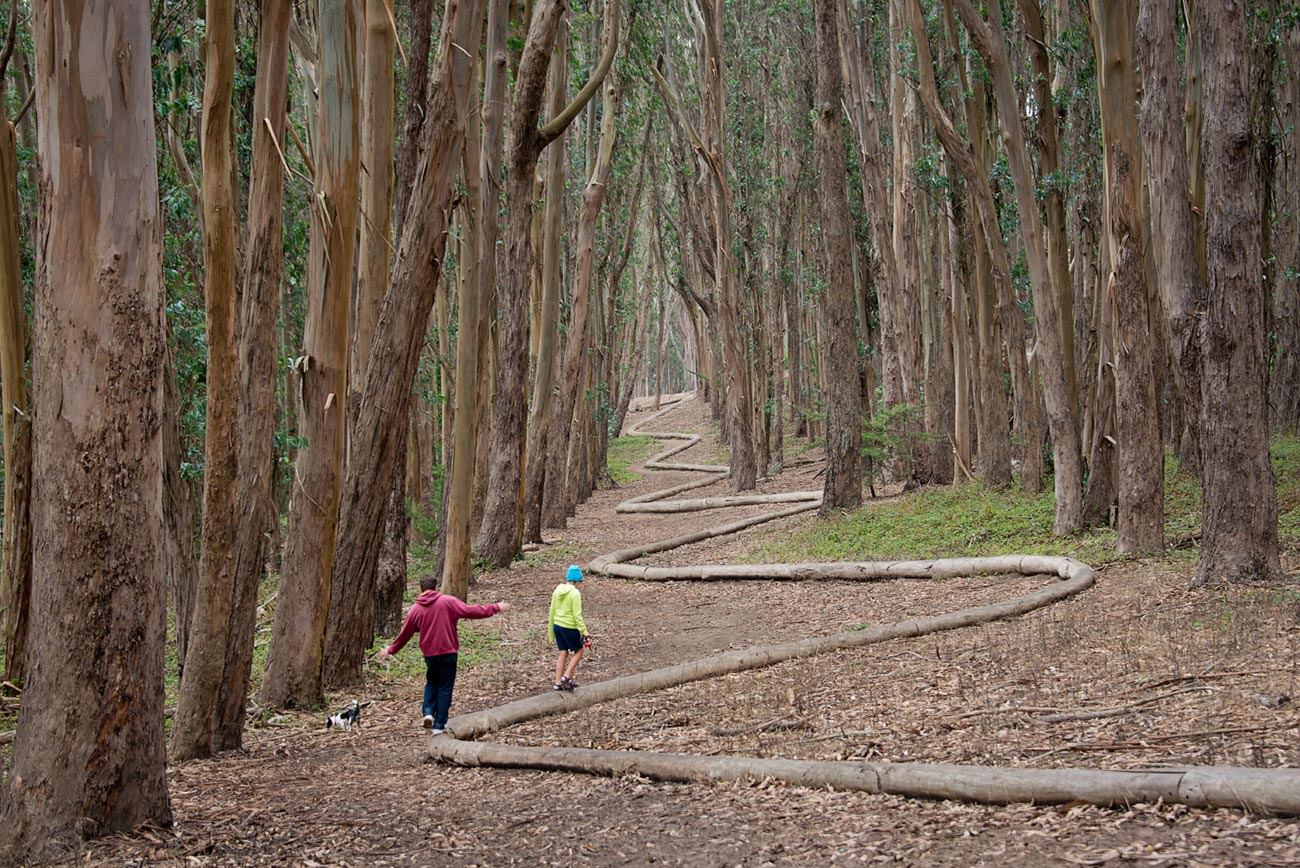
Name and Location: El Presidio Historic District in downtown Tucson
History and Significance: Following the original 1775 founding route of Tucson through the Santa Cruz River Valley, the Presidio Trail links the visitor center with museums highlighting artifacts left when early Spanish forts and missions occupied this Arizona land before American expansion west.
What to Expect: Interpretive walking tour with signage detailing Tucson’s pre-America settlement periods and associated buildings like the recreated fortified presidio wall and early adobe homes recording the area’s rich cultural foundations as a UNESCO City of Gastronomy.
Visitor Information: Trail open daily dawn-dusk. Walking tours held Saturdays at 10am. Visit center open Mon-Sat 10am-4pm; free admission.
Winding through what’s considered America’s longest continually inhabited settlement where indigenous Hohokam first put down roots over 2,000 years back, the Presidio Trail today invites pedestrian explorations through Tucson’s historic heart. Interpretive signs dotted along this paved urban hike detail various eras that shaped the city’s early trajectory, from Spanish military fortresses built in the 18th century to territorial times transitioning Arizona from Mexican possession into eventual US statehood.
Keep eyes peeled along the mile-long trail to spot remnants still standing strong despite the passing centuries, whether an ancient adobe wall decaying yet clinging onto long forgotten stories or crumbling foundations being unearthed slowly but surely beneath modern downtown. However you connect the past through present-day appeal, the Presidio Trail offers an insightful walk through time absolutely free.
See Wild Art at Tucson Museum of Contemporary Art
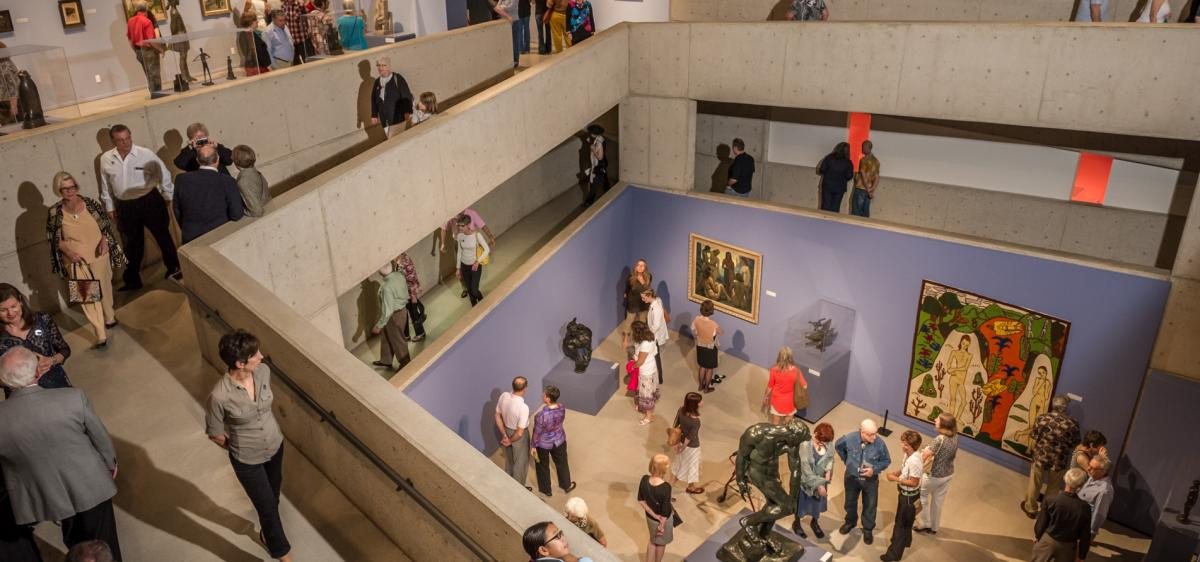
Name and Location: Museum of Contemporary Art (MOCA) Tucson downtown
History and Significance: Founded 1985, MOCA Tucson brings cutting-edge contemporary art to the Sonoran Desert through ongoing and limited-run exhibits across mediums from painting to sculpture that embrace diverse voices and challenge perceived notions through provocative postmodern pieces.
What to Expect: Explore ongoing and rotating displays from local and global contemporary artists showcasing eclectic, imaginative works across galleries and outdoor sculpture gardens intended to engage visitors in relevant dialogues through creativity and visual narratives.
Visitor Information: Open Wed-Sun 12-5pm. Admission from $10, discounts on Thursdays 5-9pm. Monthly MOCA After Dark events (6-10pm) include cash bar, music and gallery access.
Alongside MOCA downtown, the Tucson Museum of Contemporary Art (MOCA West) offers thought-provoking exhibitions and weekly events to freely experience Tucson’s vibrant art scene. The volunteer-run non-profit museum located inside a former firehouse seeks works by underrepresented voices, with rotating shows shining spotlights on both local talent and national movements through diverse mediums championing change.
Thematic group shows might juxtapose established painters with emerging photographers addressing social issues through impactful imagery aligned with MOCA West’s progressive mission. Outside, the community “graffiti” garden brims with colorful murals adding to the venue’s creative dynamism. For intimate galleries intentionally pushing artistic boundaries, MOCA West delivers daring contemporary concepts waiting to inspire your inner muse.
Final Thoughts
Beneath big blue skies with saguaro sentinels standing guard across epic desertscapes, Tucson overflows with vibrant culture, quintessential charm, and no shortage of stunning scenery waiting to fill your itinerary morning to night. The best part? You don’t have to break the bank to uncover the city’s most captivating attractions.
Diverse museums, rich heritage sights, breathtaking nature refuges, and university campus gems all offer free admission—perfect for travelers seeking engaging activities that won’t drain your vacation budget. From touring the striking Mission San Xavier del Bac to hiking through Sabino Canyon’s riparian habitats to strolling the Presidio Trail retracing ancient roots below downtown’s modern streets, memorable experiences around every cactus-dotted corner overflow absolutely free for the taking across Tucson.
So whether aiming to admire avant-garde art, gaze at galaxies wheeling overhead, or simply snap photos of the iconic saguaro sentinels waving hello along the way, enjoying Tucson from scenic trails to storied halls need not cost much more than the shoes on your feet. Offering a treasure trove of top-notch attractions welcoming all to stop in and stay awhile community-wide, Arizona’s stellar Old Pueblo makes accessing quintessential Tucson culture wonderfully free.

